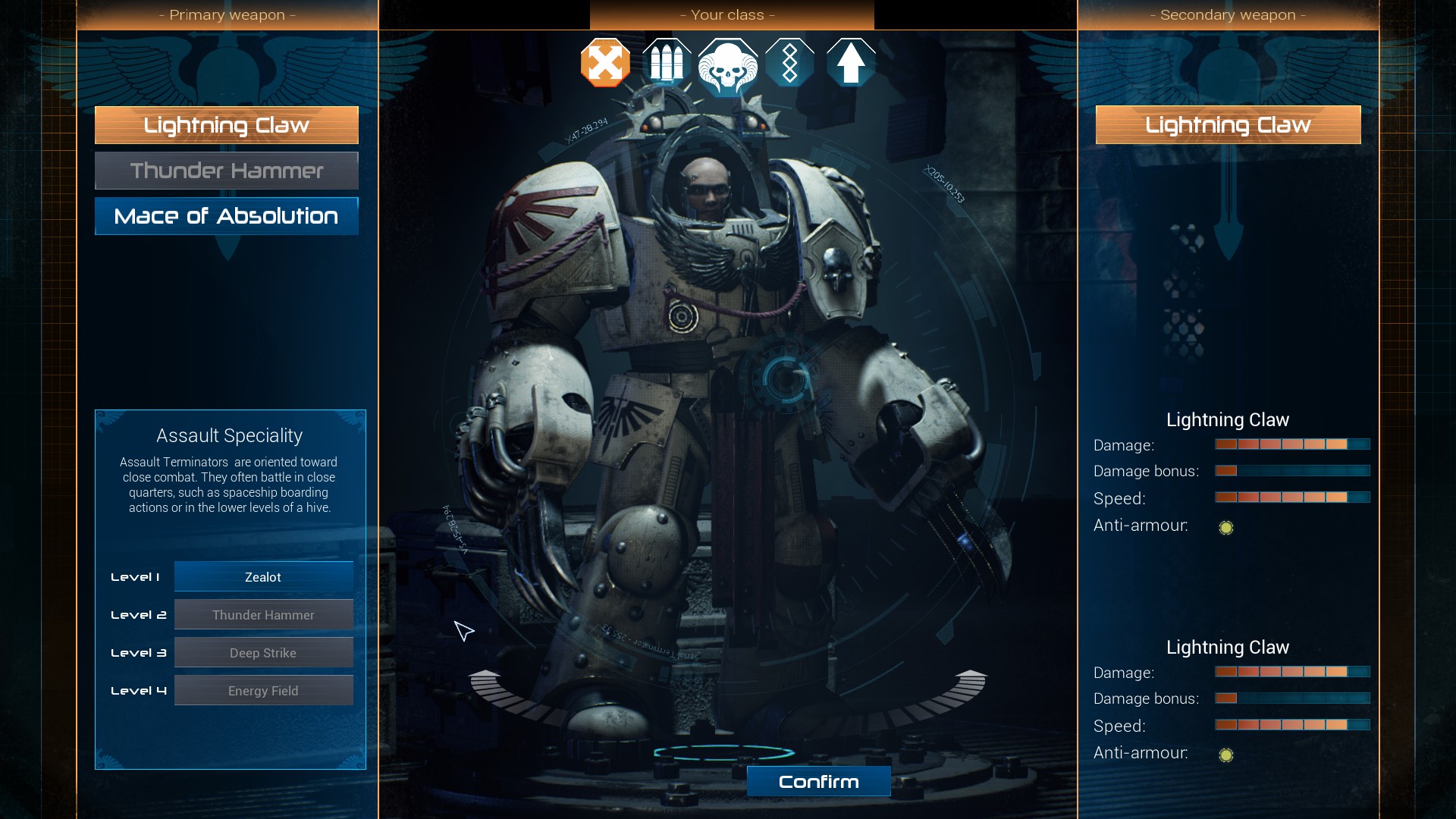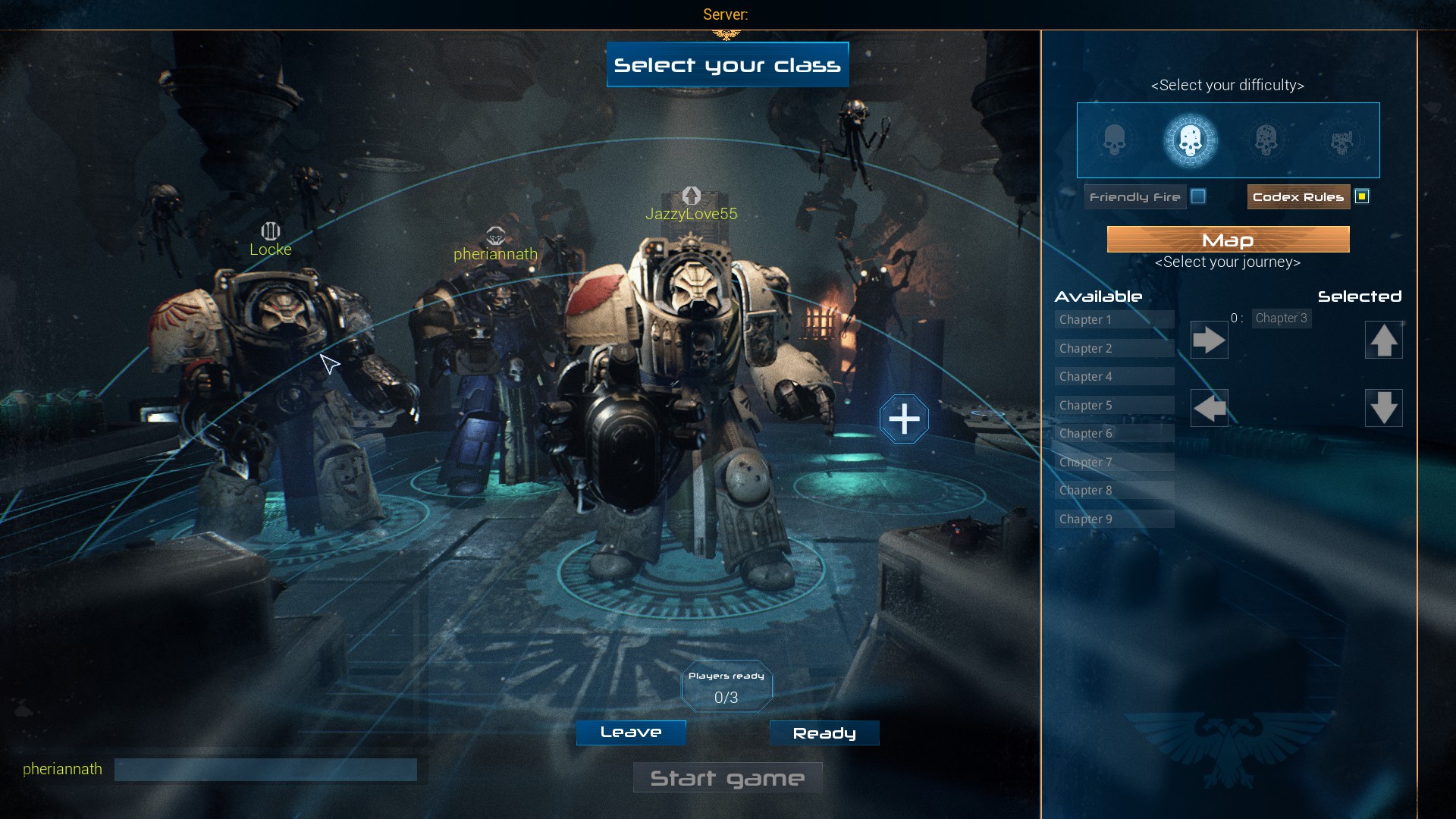
It’s disappointing when you see that shiny new plasma cannon become available to use, only to realize a few minutes into a mission that the rest of your squad really can’t support you enough to make it work, which is odd considering Deathwing as a whole feels so tactical in nature. True to the board game, you can seal doors behind you in an effort to avoid getting flanked by enemies or attacked from behind. Blocking doors also forces enemies to go to different spawn points, which are easily identified on the mini-map, so you can have some control over the location where you engage the xeno menace. Along with all that, you can issue commands to your NPC squadmates, like “move here” or “defend,” and you therefore you might think you could setup some kind of trap for the Tyranids where you rain bullets down on them from several different angles. However, given the aforementioned limited intelligence of your A.I. companions, this doesn’t work out how you’d hope it would. Without a doubt, the best way to experience the game is by playing it with friends.
In the co-op mode, you and up to three of your buddies (either online or via LAN on PC) can play through all, or some particular selection of the nine story chapters; you pick which chapters/maps you want to play in the lobby and the co-op session will cycle through those choices once a map is finished. While each player can choose their own class in co-op (either the Librarian, Apothecary, Assault, Heavy, or Tactical), and each class has their own equipment and abilities, mechanically, the game plays out the same as it did in the single-player. You’ll work your way around the map to fulfill your objectives, shooting all the xeno scum you encounter along the way and sealing up doors behind you to ensure they never overwhelm you.
There are some party composition considerations to make with playing with friends. For example, it’s definitely recommended to bring an Apothecary along as that is the only class that can heal your team. The Tactical class can revive one fallen teammate using his special ability (which has a long cooldown), which none of the other classes can do.

The nine maps you can play in the co-op mode are the same maps/chapters from the single-player story with the same objectives. There’s no random element tossed in, like a new objective, or a different configuration of the map. The key differences between single-player and co-op mode, then, are being able to play with friends, the placement and number of enemies you face, the progression system, and the removal of all the relics. In the case of the enemies, I never noticed much of a difference in number when playing with just one other person versus three other people, so it seems like the number of foes you face is fixed in co-op. For the progression system, it is entirely optional.
The three skill trees from the single-player are removed in favor of a more straightforward progression system where each class earns experience throughout the course of a mission. The maximum level you can reach is four and each level grants some kind of bonus, like a new ability or a new weapon. The Apothecary, for instance, starts with just a single-target heal but eventually gains access to a mass heal that works on everyone within a certain radius, while the Heavy starts with an assault cannon but can eventually use a plasma cannon. Weapons that are unlocked as you level up can be equipped by bringing up the inventory screen during a mission. The experience and levels you gain, however, are not permanent and reset back to level one between each map.
Alternatively, the host can enable the “Codex Rules” option that unlocks all abilities and weapons prior to the start of a mission, thereby bypassing the progression altogether. This option also lengthens the respawn timer for downed teammates to four minutes, making the Apothecary and Tactical classes even more valuable. Once each player chooses his or her loadout at the start of a mission, they’re locked into it until the mission is over, one way or another.